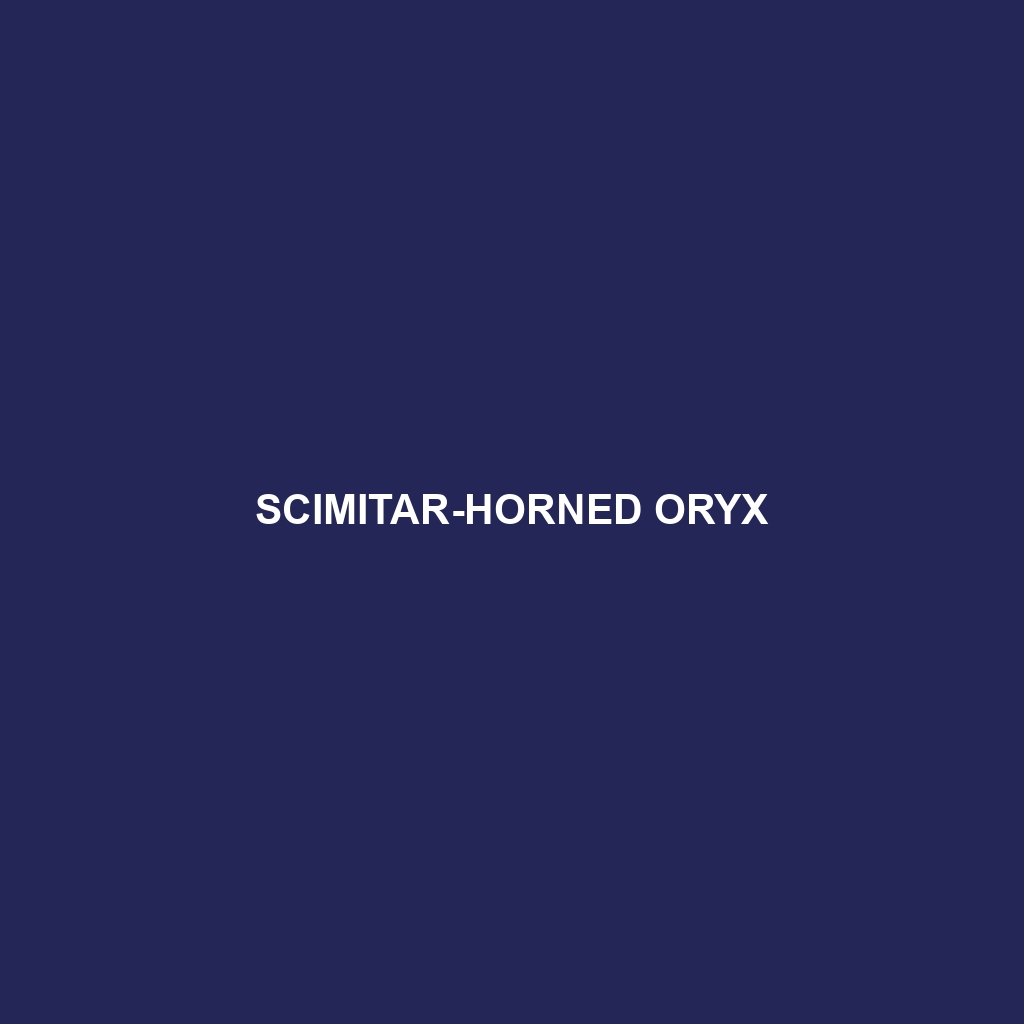Beisa Oryx: A Comprehensive Species Description
Common Name: Beisa Oryx
Scientific Name: Oryx beisa
Habitat
The Beisa Oryx, also known as the East African Oryx, is primarily found in the arid and semi-arid regions of Eastern Africa. Its geographic range includes countries such as Ethiopia, Somalia, and Kenya. This species thrives in grasslands, savannas, and scrublands, often favoring areas with access to both vegetation and water sources, which are essential for its survival in these dry habitats.
Physical Characteristics
Beisa Oryx typically weighs between 80 to 100 kg (175 to 220 lbs) and stands about 90 cm (35 inches) tall at the shoulder. They are characterized by their striking coat, which is generally a mix of tan and white, adorned with distinctive black markings on the face, legs, and flanks. One of the most notable features is their long, straight horns that can reach lengths of up to 90 cm (35 inches) in males, making them a visually impressive animal. Their adaptations enable them to regulate body temperatures efficiently, which is crucial for survival in their hot environments.
Behavior
Beisa Oryx is a highly social species, often found in herds ranging from 10 to 50 individuals. Their social structure typically consists of females and their young, while males tend to form bachelor groups. These animals are known for their remarkable ability to adapt their behavior based on seasonal changes, migrating to find food and water during dry periods. Their alertness and keen eyesight help them detect predators, thus enhancing their survival rates.
Diet
The diet of the Beisa Oryx primarily consists of grasses, herbs, and leaves from shrubs. They have evolved to consume tough, fibrous plant material, enabling them to thrive even in arid conditions where food sources are limited. They are known to be selective feeders, often favoring plants that are high in moisture content, which helps them to stay hydrated without frequenting waterholes.
Reproduction
Beisa Oryx breeds year-round, but peak breeding seasons typically occur during the rainy season when food is abundant. After a gestation period of about 8 months, females give birth to a single calf, which is able to stand and walk almost immediately. The calves are typically weaned by 5 to 6 months of age but may stay with their mothers for longer, learning survival skills along the way.
Conservation Status
The Beisa Oryx is currently classified as “Near Threatened” by the International Union for Conservation of Nature (IUCN). Habitat loss due to agriculture, human settlement, and poaching have significantly impacted their populations. Conservation efforts are crucial to ensure the survival of this species in the wild.
Interesting Facts
Beisa Oryx can survive long periods without water, obtaining necessary moisture from the plants they consume. They are also known for their striking ability to run swiftly and cover large distances in search of food. Despite their impressive horns, they are generally not aggressive unless threatened.
Role in Ecosystem
As herbivores, Beisa Oryx plays a critical role in their ecosystem by helping to maintain the balance of vegetation. Their feeding habits promote the growth of various plant species, thereby contributing to the overall health of their habitat. Additionally, they serve as prey for large predators, further illustrating their importance within the food web of Eastern African ecosystems.
